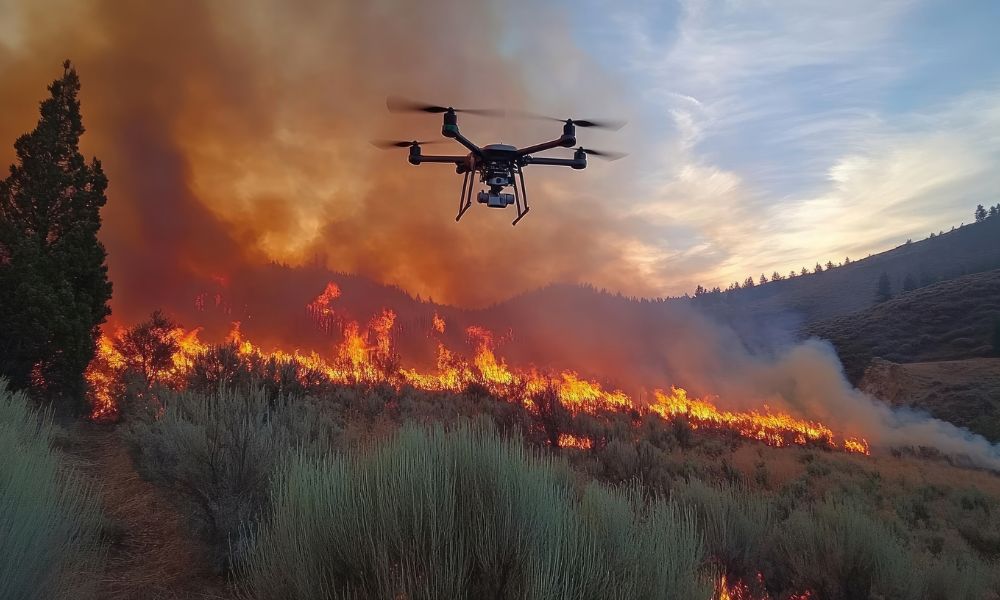Canadian Wildfire Insurance Claims Get a Tech Boost: Faster Payouts & Reduced Stress

Canada is facing an unprecedented wildfire season, leading to a surge in insurance claims. Traditional claims processes are struggling to keep up, leaving policyholders stressed and facing lengthy delays. However, a wave of technological innovation is transforming how insurance companies handle wildfire claims, offering a glimmer of hope amidst the devastation.
The Growing Crisis & Its Impact on Claims
The frequency and intensity of wildfires across Canada have dramatically increased in recent years, fueled by climate change and drier conditions. This has resulted in a significant rise in insurance claims, straining the resources of insurers and creating immense challenges for those affected. The sheer volume of claims, combined with the difficulty of accessing impacted areas and assessing damage, has historically led to slow processing times, communication breakdowns, and heightened frustration for policyholders.
Technology to the Rescue: Key Innovations
Fortunately, insurance companies are increasingly leveraging technology to streamline the claims process and provide much-needed relief. Here's a breakdown of some key innovations:
- AI-Powered Damage Assessment: Drones equipped with high-resolution cameras are capturing aerial imagery of damaged properties. Artificial intelligence (AI) algorithms analyze this imagery to rapidly assess the extent of the damage, often far more quickly and accurately than traditional methods. This reduces the need for on-site inspections in hazardous areas and accelerates the initial claims evaluation.
- Satellite Imagery & Data Analytics: Insurance companies are utilizing satellite imagery to gain a broader view of the impacted areas. Data analytics tools then process this information, identifying patterns and trends to predict claim volumes, allocate resources effectively, and detect potential fraud.
- Mobile Claims Platforms & Self-Service Tools: Mobile apps and online portals are empowering policyholders to submit claims, upload photos and videos of damage, and track the status of their claims in real-time. This self-service approach reduces the burden on claims adjusters and provides greater transparency for policyholders.
- Automated Communication & Chatbots: Automated communication systems and AI-powered chatbots are providing instant updates and answering frequently asked questions, reducing wait times and improving customer service.
- Blockchain for Secure Data Sharing: Emerging technologies like blockchain are being explored to create a secure and transparent platform for sharing claim information between insurers, government agencies, and other stakeholders.
Benefits of Technological Transformation
The adoption of these technologies is delivering significant benefits:
- Faster Payouts: Accelerated damage assessment and streamlined processes are leading to much faster claim settlements.
- Reduced Stress for Policyholders: Increased transparency, self-service options, and proactive communication are reducing the anxiety and frustration experienced by those affected by wildfires.
- Improved Efficiency for Insurers: Automation and data analytics are optimizing claims handling operations, freeing up adjusters to focus on more complex cases.
- Enhanced Accuracy: AI-powered assessments minimize human error and provide more accurate damage estimates.
Looking Ahead: The Future of Wildfire Insurance Claims
As wildfires continue to pose a growing threat, the role of technology in insurance claims will only become more critical. We can expect to see further advancements in AI, drone technology, and data analytics, leading to even more efficient, accurate, and customer-centric claims processes. The integration of predictive modeling will also enable insurers to proactively assess risk and offer tailored insurance solutions to homeowners in wildfire-prone areas. Ultimately, technology is not just transforming the claims process; it is helping to build a more resilient and responsive insurance industry in the face of climate change.





